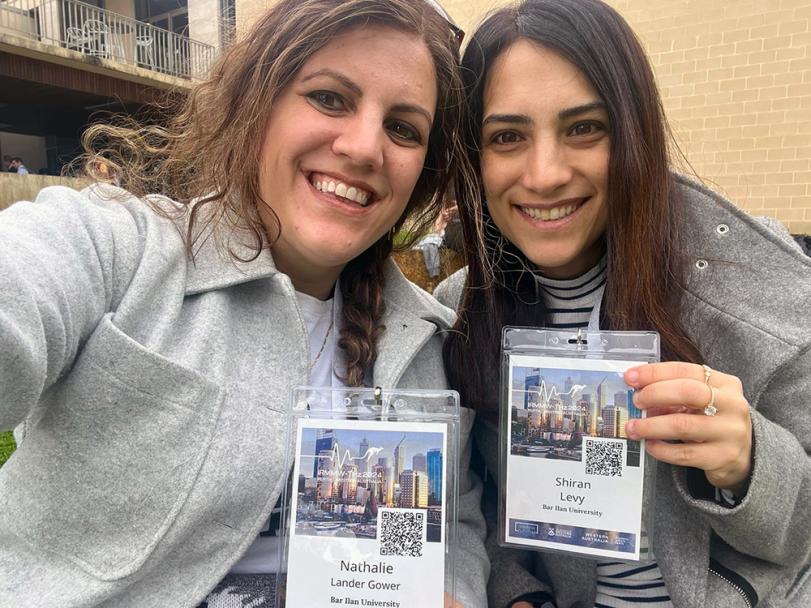Postcard from Perth

PhD students Shiran Levy and Nathalie Lander Gower of Dr. Asaf Albo’s research group flew all the way to Australia to present their research on implementations of Terahertz quantum cascade laser
Shiran Levy and Nathalie Lander Gower, both PhD students at Dr. Asaf Albo’s research group, recently represented the Faculty of Engineering at the IRMMW-THz conference in Perth, Australia. It is the largest conference on research and applications of high frequencies in the electromagnetic spectrum. Shiran and Nathalie were the only Israeli representatives at the conference.
Shiran, 37, married +3, got her bachelor’s and master’s degrees in physics from Bar-Ilan University. Her master’s thesis focused on quantum and non-linear optics in X-rays, and she is currently in the midst of the third year of her doctoral studies. Mathalie, 34, married + 5, got her bachelor’s in electro-optic engineering from Tal Institute in Jerusalem, and her master’s in physics, specializing in quantum optics, from Bar-Ilan University. She is now in the final year of her doctoral studies.
Their research concerns quantum cascade lasers in the realm of Terahertz. “These are semi-conductor lasers built as a series of thin layers, organized cyclically in a way that creates quantum caging. Contrary to standard semi-conducting lasers, where wavelength is determined by the material’s bandgap, with quantum cascade lasers the wavelength is determined by the width of quantum wells. By properly planning the width of the wells and height of the barriers, we can engineer wavelength emissions in the Terahertz realm,” explains Shiran. “Terahertz as a field offers plenty of applications, including spectroscopic sensing and numerous imaging implementations, and quantum cascade lasers are the most efficient source for this spectrum of frequencies. The main disadvantage is the cooling requirement: it’s a small device set inside a large cooling system, so it cannot be mobile; it has to stay in the lab. The goal of both our researches is to design a device that would enable lasing (laser emission) in room temperature, negating the need for external cooling.”
At the conference, both Shiran and Nathalie gave lectures on their individual doctoral thesis. Shiran’s research concerns nitride-based Terahertz quantum cascade lasers, with the goal of designing a device that works in room temperature using gallium nitride. “This material has unique qualities that are suitable for high-temperature lasing,” she says. Nathalie’s research explores temperature performance of Terahertz quantum cascade lasers, focusing on gallium arsenide, the most studied material in the past 20 years. Gallium arsenide can perform in a maximum temperature of 261 Kelvin. “Both lectures were very well received, and people were welcoming,” concludes Shiran. “Nathalie and I are both grateful for Asaf for his excellent guidance which helps us achieve such significant academic peaks.”
Last Updated Date : 28/09/2024



